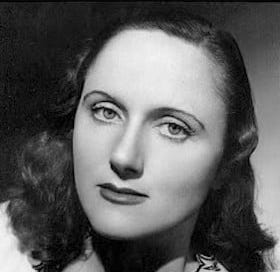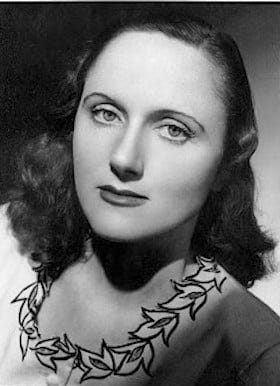Last weekend I wrote about the real-life murders that inspired the works of Agatha Christie… I had meant it to include examples from other writers, but I reached 3000 words (astonishingly easy to do) and thought: enough.
So here is Part II.
As is pretty clear from my Substack, I find murder one of the most interesting of all subjects (along with marriage - and how often the two go together!) because it is human nature writ large. And I love the fact that it so clearly interested one of my very favourite writers: the Elizabeth Taylor, pictured above (the other Elizabeth Taylor is that film star, the one with the diamonds and the husbands and the violet eyes).
In fact this whole idea came about when I was recently visiting my mother, and one afternoon a well-known episode of Tales of the Unexpected (leg of lamb, say no more) was on TV in the background. Come the theme tune (often the best bit) my mother said something like, they’re quite clever but one of these TOTU was different league, I remember it from years ago, is it called ‘The Fly’? To which I replied, with an odd surge of excitement, yes, ‘The Fly-paper’, and there’s a very good reason why that one is so much the best.
Because that TV episode, brilliant indeed and broadcast in 1980, is from a short story by the Elizabeth Taylor. And the story - how to put this: is based upon? is inspired by? - neither is correct, both are too obvious and somehow demeaning. Let me say instead that the story contains in it some essence of Elizabeth Taylor’s response to the Moors Murders: the unspeakable 1960s case in which Ian Brady and Myra Hindley lured and killed four children, then buried them on Saddleworth Moor (there was also a fifth, slightly older victim). ‘The Fly-paper’ is about that act of luring, the supremely wicked kindling of trust in order to betray it.
‘Rather horrible’, as Elizabeth Taylor described it to her agent, ‘and I dare say no one will like it’. The Cornhill Magazine published the story in 1969; the New Yorker, usually her great supporter, had an attack of nerves and asked her to change the ending. ‘I wonder whether readers of the tale will agree with me that without that ending there is no story’, wrote her daughter, with elegant Taylorian restraint, in the introduction to her Complete Short Stories.
Before ‘The Fly-paper’, however, there was the 1949 masterpiece A Wreath of Roses, which takes me to the heart of this post.
Keep reading with a 7-day free trial
Subscribe to Laura Thompson’s Substack to keep reading this post and get 7 days of free access to the full post archives.




